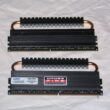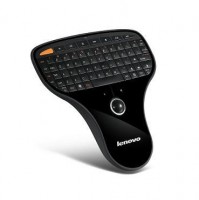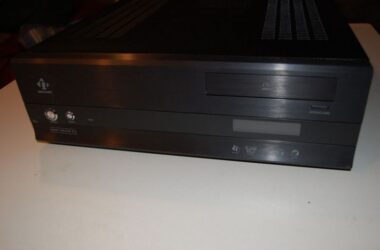Introduction
As an owner of two fresh new 500 Gigabyte HDDs, At the time I was lacking a second SATA cable to hook up the second drive, so I found this a perfect opportunity to try out the ThermalTake BlacX Hard Disk Drive Dock. ThermalTake has been manufacturer of reliable case equipment for years.
Packaging
The dock, as expected, came in a shrink-wrapped retail box. The unit was bubble wrapped inside, and came with an AC power adapter and USB cable. There was also a small brochure inside describing basic installation.
Form Factor
The unit is black plastic and pretty light. It is small enough not to intrude on desk space yet wide enough to offer stability to a docked 3.5″ drive. Its look is appealing, although the image of having an upright drive mounted in it may seem less so to a non-computer junkie like myself. The rear of the unit houses the USB port, AC port, and the power button. The button is pushable and associable by touch to see whether it is on or off (if it’s off it sticks out more). This is pretty unnecessary, though, as the top of the unit has a pair of lights, disguised as a single light.
Usage
I plugged in the device and powered it on: The dock claims to have hot swappable capability, so I may insert and remove drives at my leisure (given I’ve unmounted them, of course). Linux detected the device as a USB Mass Storage in about five seconds. As with any normal mass storage device, I could open and copy files between it and my other drives. I assume windows would behave identically with regards to a normal mass storage device.
Performance
I think it can be assumed that when you put a SATA drive onto a USB bus you will be see a notable performance decrease. However, I think it’s also clear that you are doing so for the sake of convenience. The BlacX behaves as expected, and despite its hot-swapping convenience, it will be at the price of a lot of access speed. I ran a benchmark using the POSIX ‘dd’ utility, first on my active boot drive and an identical drive in the blacX dock:
BlacX
4000000+0 records in4000000+0 records out4096000000 bytes (4.1 GB) copied, 159.909 s, 25.6 MB/sreal 2m39.932suser 0m0.684ssys 0m15.537s
SATA Drive
4000000+0 records in4000000+0 records out4096000000 bytes (4.1 GB) copied, 61.2139 s, 66.9 MB/sreal 1m1.837suser 0m0.580ssys 0m18.461s
As you can see, the price of USB is not a small one. The dock caused a loss in about 40 MB/s of speed. But you weren’t planning on running an OS off of the dock, were you? These write times are fine for writing almost any storage, as long as you’re willing to wait a few extra minutes. It also beat those of my FireLite portable drive by a few MB/s (due to the lack of space I had on this drive, I was forced to use a smaller sample):
400000+0 records in400000+0 records out409600000 bytes (410 MB) copied, 21.7235 s, 18.9 MB/sreal 0m21.885suser 0m0.064ssys 0m1.616s
Conclusion
All in all, the BlacX has an intended purpose, and serves it very well. It can turn any SATA internal drive into instant portable storage, and saves the possible pain of installing and removing hard drives from a laptop or desktop machine. If you need to do lots of backups, or even don’t have enough space in your machine for all of your drives, this dock is an excellent choice.
Pros:
- Ease of use (no drivers needed)
- USB 2.0 for fast transfers
- Works with 3.5″ and 2.5″ (laptop) drives
- Size is not intrusive
Cons:
- Speed loss
- Hard drive sticking up may be unattractive
- No FireWire or eSATA
- SATA Only













